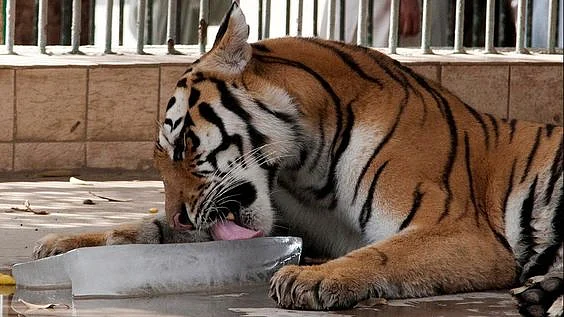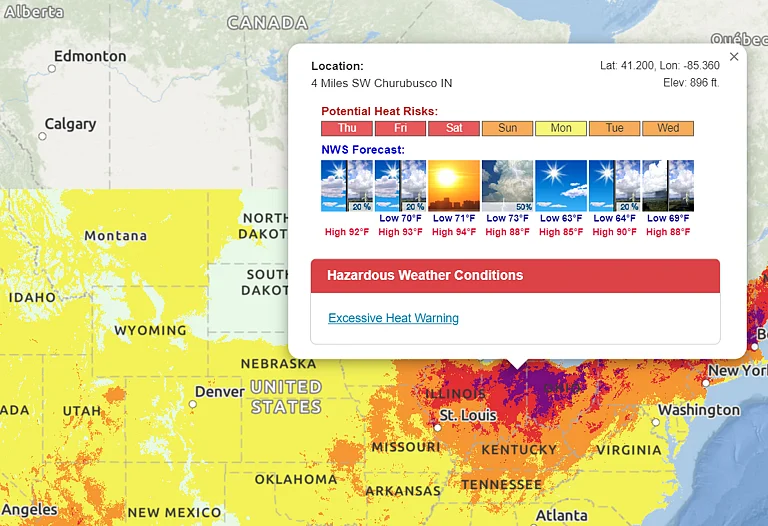With extreme temperatures sweeping across the nation and multiple states on heat wave alerts, animals in American zoo are struggling to stay cool. Zookeper, however, are taking proactive steps to ensure their animals remain comfortable during the sweltering summer months. These measures include a variety of cooling techniques, tailored to each animal's needs and behaviors, with the added benefit of observing their responses to improve future care.
In Akron, Ohio, Luca, a juvenile Andean condor, pecks at ice blocks between sessions of tearing apart paper to mimic its natural behavior of scavenging carcasses. Sumini, the Akron Zoo’s female Sumatran tiger, enjoys extra pool time and gnaws on ice blocks filled with blood and meat chunks.
Peccaries and tortoises are seen lollygagging in replenished wallows, while others find solace under misters. Big cats and spotted hyenas feast on "bloodsicles"—frozen blocks of blood saved from their raw-meat diets.

“We freeze the juice that comes off their regular diet. Like if you buy a steak at the supermarket and pull the juice out, we freeze that and make a popsicle out of it,” said Chris Massaro of ZooTampa at Lowry Park in Tampa, Florida.
These frozen treats help prevent overheating while adhering to the animals' regular diets. At ZooTampa, a recent donation of 150 pounds of shaved ice from a local business allowed the zoo’s nutrition center to create snowballs for orangutans and a watermelon-infused ice block for a Southeast Asian sun bear.
Zoo staff also try different ways to recreate animals' natural habitats. For instance, rhinos at ZooTampa can wallow in mud to protect their skin from the sun. “We provide them with everything they would utilize in the wild as cooling techniques,” Massaro said. “We provide what they like and what they need so they have a happy, healthy life here at the zoo."

Physical and mental stimulation are also essential for zoo animals to maintain a stable health. Animals that eat fish are given buckets of frozen fish to play with, providing both cooling and enrichment. “It takes a while to melt, and they can play around with it,” Massaro said.
Zoos often house animals whose natural habitats resemble the local environment. At the Phoenix Zoo in Arizona, the majority of animals thrive in extreme temperatures. Phoenix zookeepers have added measures like regularly maintained pools and misters for lions, elephants, rhinos, and Andean bears.
Other cooling methods include sprinklers and garden hoses for periodic dousing, cold water slabs for tigers, wallows for tortoises and pigs, and air-conditioned spaces for orangutans.


















